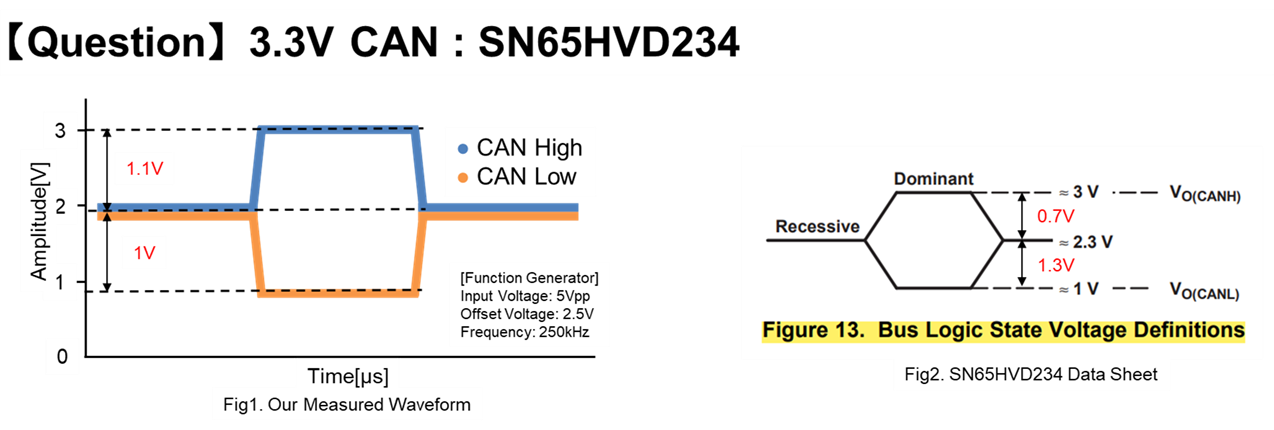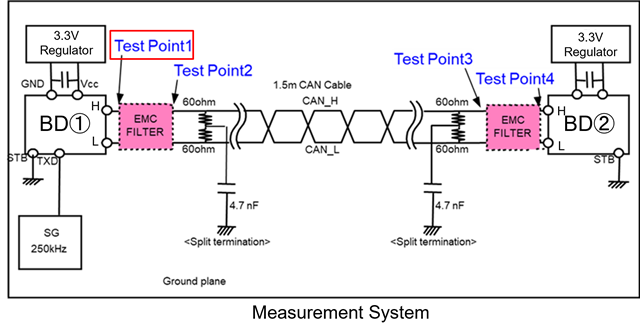
In the data sheet, CAN H/L is asymmetric.
However, in our measurement, it was symmetrical.
Is a problem with the input signal or the CAN pin connection?
Please tell us the cause and solution of the problem.


This thread has been locked.
If you have a related question, please click the "Ask a related question" button in the top right corner. The newly created question will be automatically linked to this question.

In the data sheet, CAN H/L is asymmetric.
However, in our measurement, it was symmetrical.
Is a problem with the input signal or the CAN pin connection?
Please tell us the cause and solution of the problem.


In the dominant state, the bus voltages depend mostly on the transmitter. But in the recessive state, the bus voltage depends on what pull-up/-down resistors on the bus and in the transceivers use, so it is somewhat random. For proper communication, only the differential voltage matters. There is no problem.
Hi Reina,
I can't see the imaged that you pasted at the bottom of your post. It may help to provide some schematic of the CAN device that you are using.
As Clemen's pointed out the dominant state is driven by the transmitter and recessive by the bus load.
If you are seeing the slew rate is off by a lot, it may be due to differences in the differential loading. This could be from bad trace matching (CANH or CANL trace is longer than the other resulting in more capacitance on the longer trace) or some tolerance in passive components used for filtering like resistor/caps.
I've assigned a subject matter expert who can provide further comments.
-Bobby
Everyone, thank you for answering.
I'll provide the circuit diagram I used this time.
In this measurement, I understand that there is no problem with the waveform being symmetrical.
In addition, what could be the reason why the waveform is asymmetrical as shown in the datasheet?
I'm wondering because common 5V CAN ICs have symmetrical waveforms.
Hi Reina,
The waveform in datasheet was only an example, CAN signal doesn't need to be asymmetrical or symmetrical. The only difference I can tell is that your measured waveform has a faster rise/fall time. This is due to there is no capacitive load between CANH and CANL in your system. If you place a 100pF capacitance on the CAN bus you should also measured a reduced rise/fall time.
Regards,
Sean